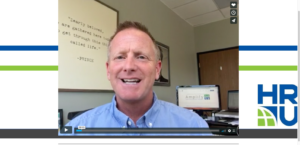I absolutely love going to the SHRM National Conference. I’ve been 8 out of the last 9 years. I’ve spoken at many. I’ve been a part of the blogger team at many. I’ve had real conversations with real HR and Talent pros at every single one.
If I was advising HR and TA Technology vendor teams (oh wait, I do) I would tell them to take their product teams to SHRM National and make them go to sessions, meet real HR people, walk the expo and observe and listen, and invite a group of customers to dinner or drinks.
Why?
You (HR and TA tech vendors) are not listening to the masses.
For the most part, most teams building HR and TA technology are not and have never been HR or TA practitioners. They are technologist by trade and are looking to solve problems. The problem is, this leads to solving problems for the 1% not the 99%.
When you sit in sessions at the SHRM conference you get to hear real-life HR and Talent. What you quickly realize is that the problems in the field, are much lower than you’re trying to solve for, and much more common. We (the HR and Talent community) want easy-buttons, not higher levels of technology. We want simplicity and shit that works.
You make us believe this is a single point solution, a suite. It’s not and we get pissed off because your promises end up making us look like idiots. We want great payroll, great HRIS, great recruiting, great performance management, etc. You give us great of one or two things, and then average for the rest, leaving most of the organization upset and believing we have no idea what we are doing, and then IT and Finance picks our technology and screws up everything.
When you have real conversations with real HR pros you learn what our real pain is, and then you can learn how to solve that. SHRM National gives you the best opportunity to actually see this in a giant way. Once you go, you can’t stop thinking about what you just learned, what you just experienced.
I go to SHRM National every year because it grounds me in reality. The reality that each day, if I truly want to help, my people are SHRM people. I need that reminder because it’s too easy to walk away from those doing the actual work and think it’s the 1%ers who I should really be focusing on. It’s not.
What’s the one reason you should attend SHRM if you’re building technology for this space?
Because the attendees at SHRM National is who you are really building technology for. This is the cross section of your user community, all together in one place, with a desire to improve themselves and their organizations. They made a commitment to show up and develop themselves. They care.
I hear from way too many HR and TA tech vendors that SHRM is a waste of time. “There are no buyers there, Tim!”
Yeah, probably not a ton of enterprise buyers, or folks who will ultimately sign the contract. But, it’s loaded with HR and TA pros and leaders who have the budget authority of $5K, $10K, $25K. But I guess those amounts aren’t interesting to you.
20,000+ HR and Recruiting pros were in Vegas this week, all of whom are using HR and TA technology. All of whom were looking to make themselves and their organizations successful.
I’m not saying you need to go drop big money in the expo, but you should at least send some folks from the product team out to do some due diligence around what reality is, every once in a while.


